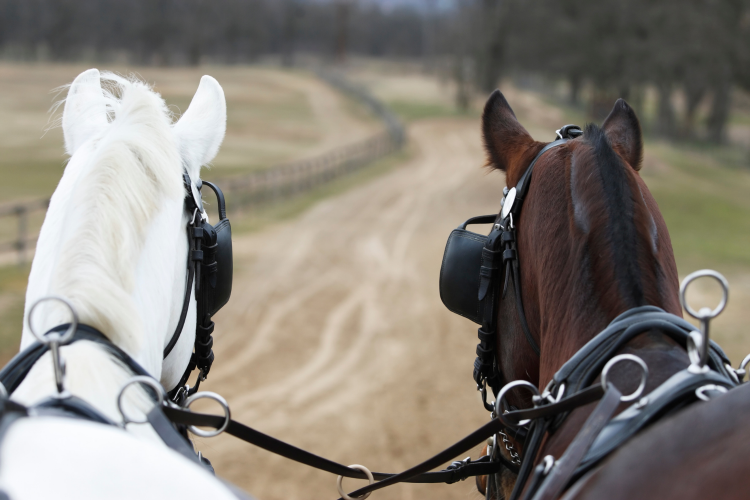Advertisement

Photo: Canva Pro
Photo: Lone Marquard Jensen
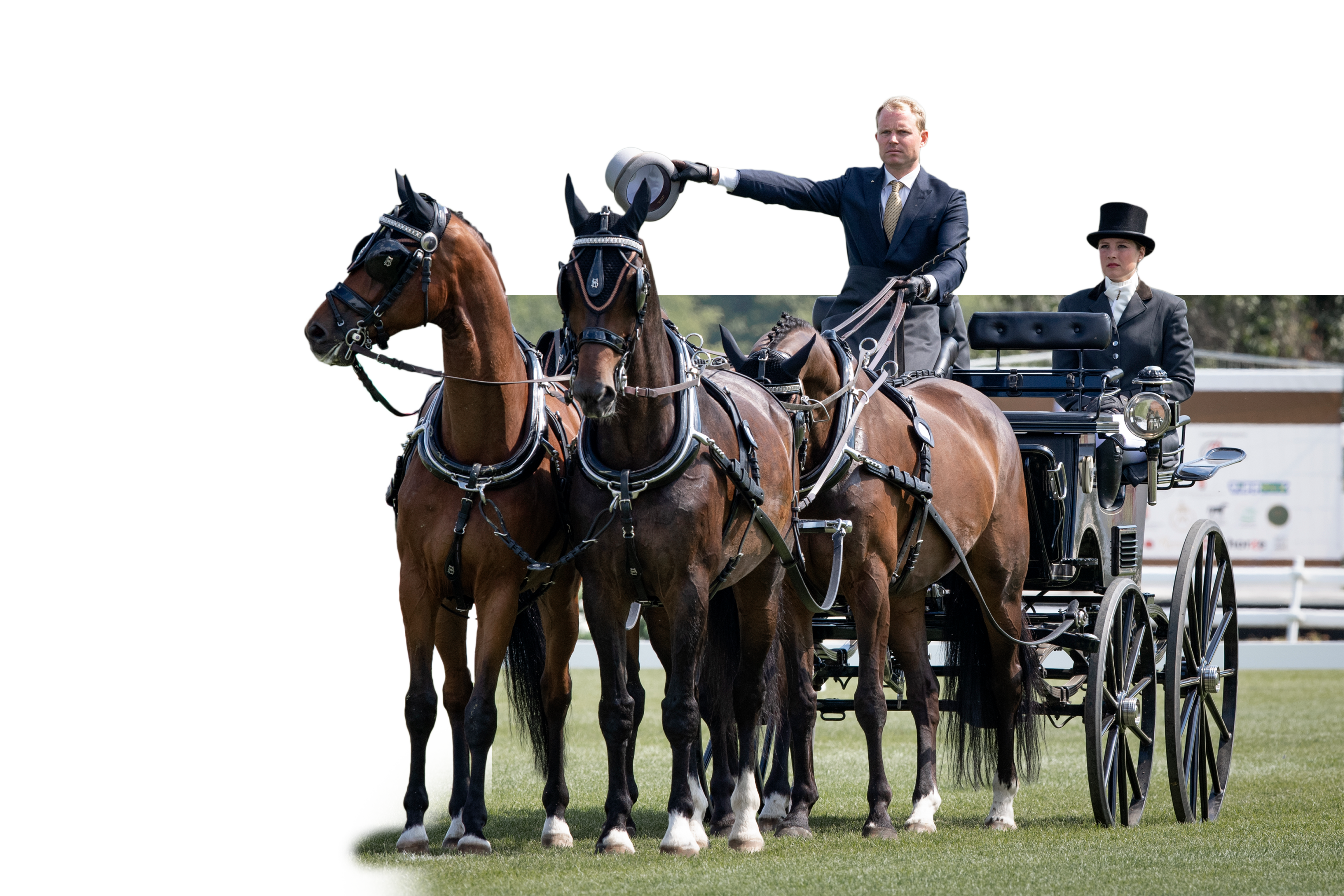
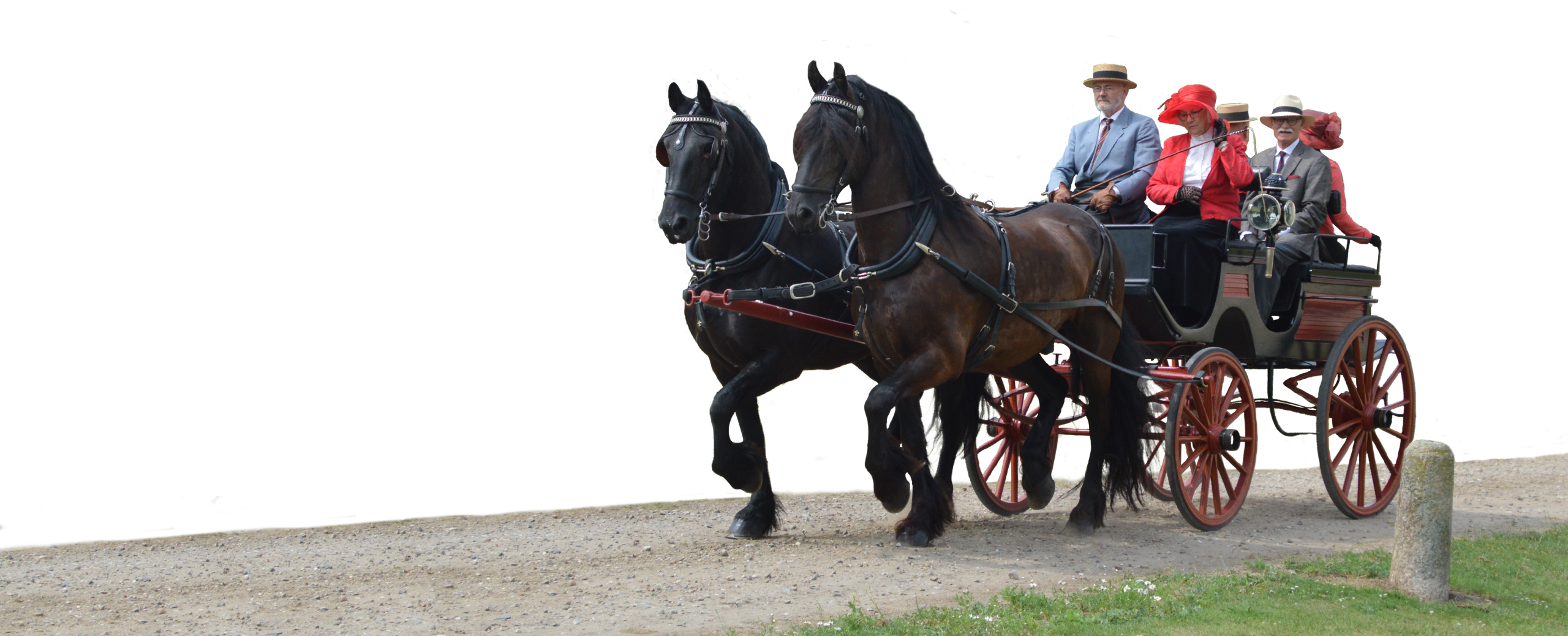
Traditional driving
Probably the most beautiful equipage.
If one day you come across some beautiful, well-groomed old horse-drawn carriages in a nature area on your Sunday walk, there is most likely a competition going on in traditional driving. Here, it's the whole equipage that matters. At the start of the competition, the equipage presents itself to a judge, who evaluates them, the clothing of both driver and passengers, hats, gloves, but also whether the carriage and harness match in age and appearance, and whether everything is cleaned and polished. The horse must also appear clean and well groomed. Then the equipage goes out on a route, out in the beautiful nature, the route is set with a fixed length of the same number of kilometers for all teams, whether they have 1, 2, or 4 horses in front of the carriage. On the route there is a break where the riders stand still for a fixed number of minutes, often around 15 - 20 minutes. Back at the start there are several tasks, for example a glass of champagne on an object, for instance a pole, where the driver has to stop, take and drink, and then put the empty glass at the next object. Of course, it could also be a glass of water. Afterwards, an obstacle course is run on time. This is all laid down in the propositions you can read when registering for the competition. A very beautiful and entertaining competition to visit as a spectator too. The next and highly elite discipline is competition driving.
Photo: FEI/Richard Juilliart
By Nan Guldborg
Competitive driving
Competitive driving with a horse combines the elegant dressage where the horse must be driven by a soft hand, with carrying and collection just as in dressage riding, and then combines it with speed and precision driving. The closest comparison to this kind of sport discipline in equestrian sport is probably eventing.
The dressage program is very much the same as when you ride a dressage test, but here the really hard part is getting the horse to be collected without using the aid from your own body, but doing it through voice control, and where the whip acts as your legs, by adding the light pressure when the horse's shoulder bulges out. All the exercises in the dressage programme are the same as in riding with different dressage exercises and collected gaits - well, everything is basically the same, except that the course is of a slightly bigger calibre. A driving course is 40 x 80 meters, and for 4-in-hand it is 40 x 100 meters.
Besides dressage, there is also marathon driving. This consists of two stages; the A and B stage. On the A stage, between 5 and 8 kilometers must be driven on time. Each team will have a stopwatch on the carriage. This means that in their daily training they have practiced trotting at a fairly constant speed, so that they can reach the set number of kilometers in the given time. After the A stage, the rider takes a break for 10 minutes to get his heart rate down and mentally ready for the B stage, which consists of 4 - 6 obstacles, which are also driven on time, as fast as possible. Each obstacle consists of gates from A to D, which are marked with a red letter A on the right, a white letter A on the left and so on. This is probably the discipline both horses and drivers have the most fun with. The horses pull with great eagerness and ears forward towards each obstacle that the driver runs towards and they obey every little command from the seat behind. This is also the discipline with the largest audience.
The cone competition
Last is the discipline cone driving which is precision driving. A lane is set up with about 20 gates, consisting of two cones on which a ball is placed. Here too, you see which way the gate has to be driven through, using a red cap on the right and a white one on the left. The track is about 250 meters long and has to be completed in a set time, so not only do you have to run the track correctly in numerical order, but you also have to be careful not to drop a ball and complete the whole track in the set time. You can compare it to a jumping track.
Friendly atmosphere
What has surprised me most about driving with horses has been the friendly, family spirit which is always present. Whether it's at the international showground, where people quickly come to the rescue with the loan of equipment or even a horse, if problems arise, and where national dishes are served at the big international shows. Or the warmth and help you always find in every association, at every small event - whether it's a talk about holidaying in Poland by horse-drawn carriage, or a club meeting - it has made my passion for the sport great and heartfelt.
Photo: FEI/Richard Juilliart
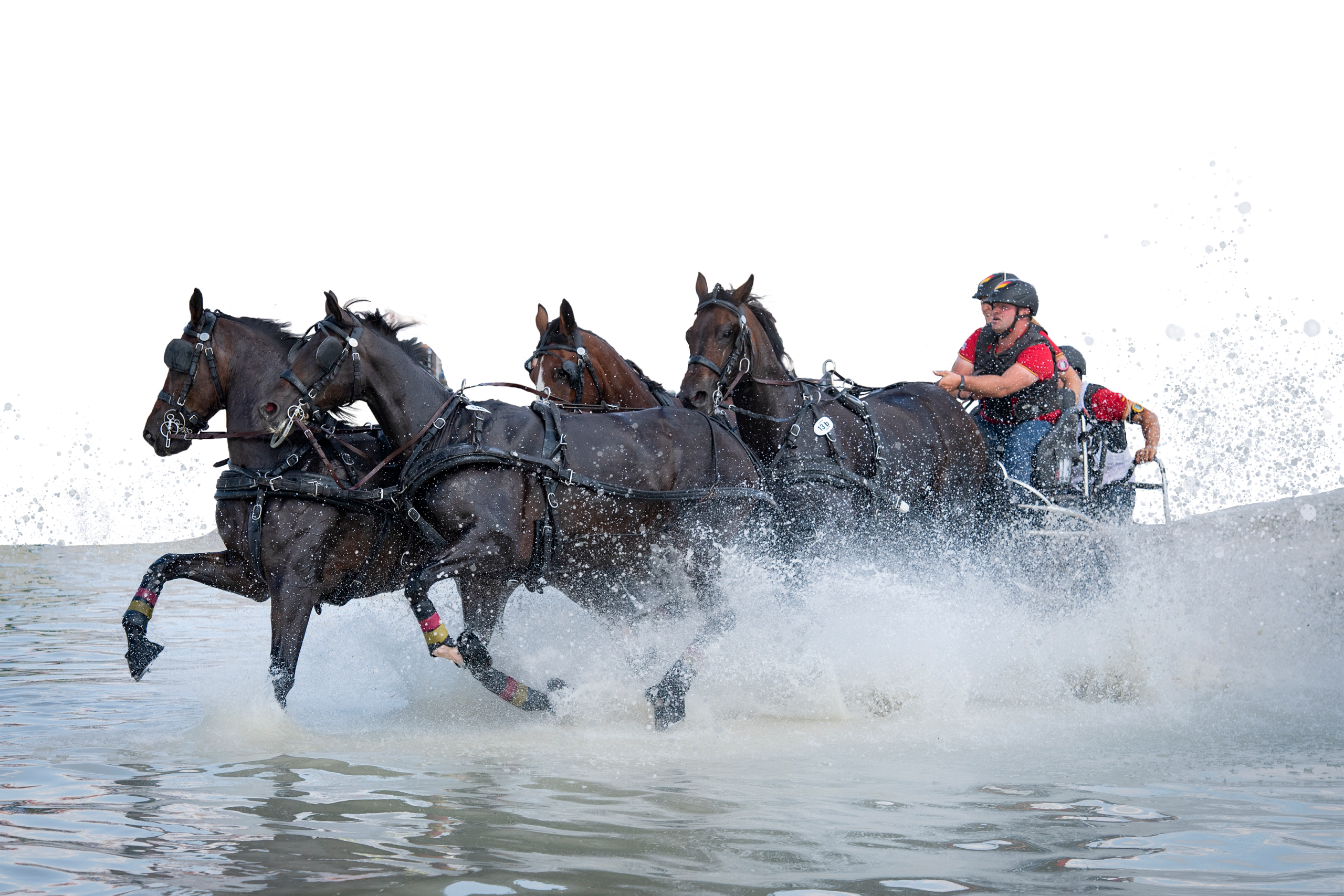
There are many prejudices, when the word driving is mentioned in a riding stable. But after all, there aren't many driving horses that aren't also riding horses. Some of the driving horses also compete at very high levels, for example in dressage.
In general, for the driving sport, the horses have a slightly different basic education and the whole attitude towards keeping horses is more of a family occupation, whether you are biologically related or just share the same passion. This is even shown in the fact that you don't drive alone, but always have a groom with you.
The groom is essential
Some might say that a groom is the most important person on the carriage. The groom is the counterweight if the cart tips a bit, the groom is the one who jumps down and stands in front of the horse at crossroads. The groom is the one who can move the cart in a marathon obstacle, where a wheel might hit a pole. The groom also stands in front of the horse when you get ready, or jump off the wagon if some equipment is not sitting right - because the driver is sitting on the buck, on the wagon, in his seat and has the lines in his hand. So basically, the groom is your safety.
The basic training of the driving horse
The most basic thing is that the horse should be able to stand still. Not only in the stable when you are grooming, but also when he is being harnessed or when you go on a picnic and have a basket full of sandwiches, cakes and coffee with you. Or when you're waiting at the showground. This is achieved with practice, calm and focus on your vocabulary - first without the cart on and then with.
Fortunately, most people choose a professional when first having to teach the horse about driving. The slightest uncertainty and unawareness from the new driver can have fatal consequences for both the treasured horse, but also other people on the road - both soft and those with a little more horsepower in the engine compartment. A frightened horse, harnessed and with a carriage behind it does not need much imagination to imagine what might happen.
That said, a lot of money is saved if you do a little preparation from home. Train the horse to wear the full harness. Drive it from the ground. That means that you lunge it with double lines. It requires practice, but gives a really good indication of what it means to have the lines in hand. And remember to teach the horse to stand still.
So, what kind of driver do you want to be?
Just as there are many disciplines of riding, there are also many disciplines of driving a horse and cart. The oldest, and probably the most traditional, is probably the working/ploughing/draft horse. There is no fixed breed associated with the draft horse, but often it is slightly heavier breeds such as the Fjord horse or the Belgian horse. The traditional meaning of the word is that it is used in agriculture. Yes, you read correctly. It is still used in agriculture. There are competitions in ploughing both in spring and autumn. On a daily basis, the driver trains with the pull of other things behind the horse, so it learns to walk in a straight line as well as learning the steady speed as the driver walks behind the horse. Timber pulling and precision between objects are practiced. When the driver drives his horse, it is often with, for example, a carriage from another bygone era, where the horse can back and park with one centimeter precision, as if it were a car to be maneuvered between two beams lying on the ground like a parking lot.
In Germany, every two years, there is a big international event called Pferdestark, where all the Nordic and other European countries come together to hold an event for this traditional discipline. Several hundred equestrians meet here and compete.
Some of these riders also ride another discipline, traditional driving.
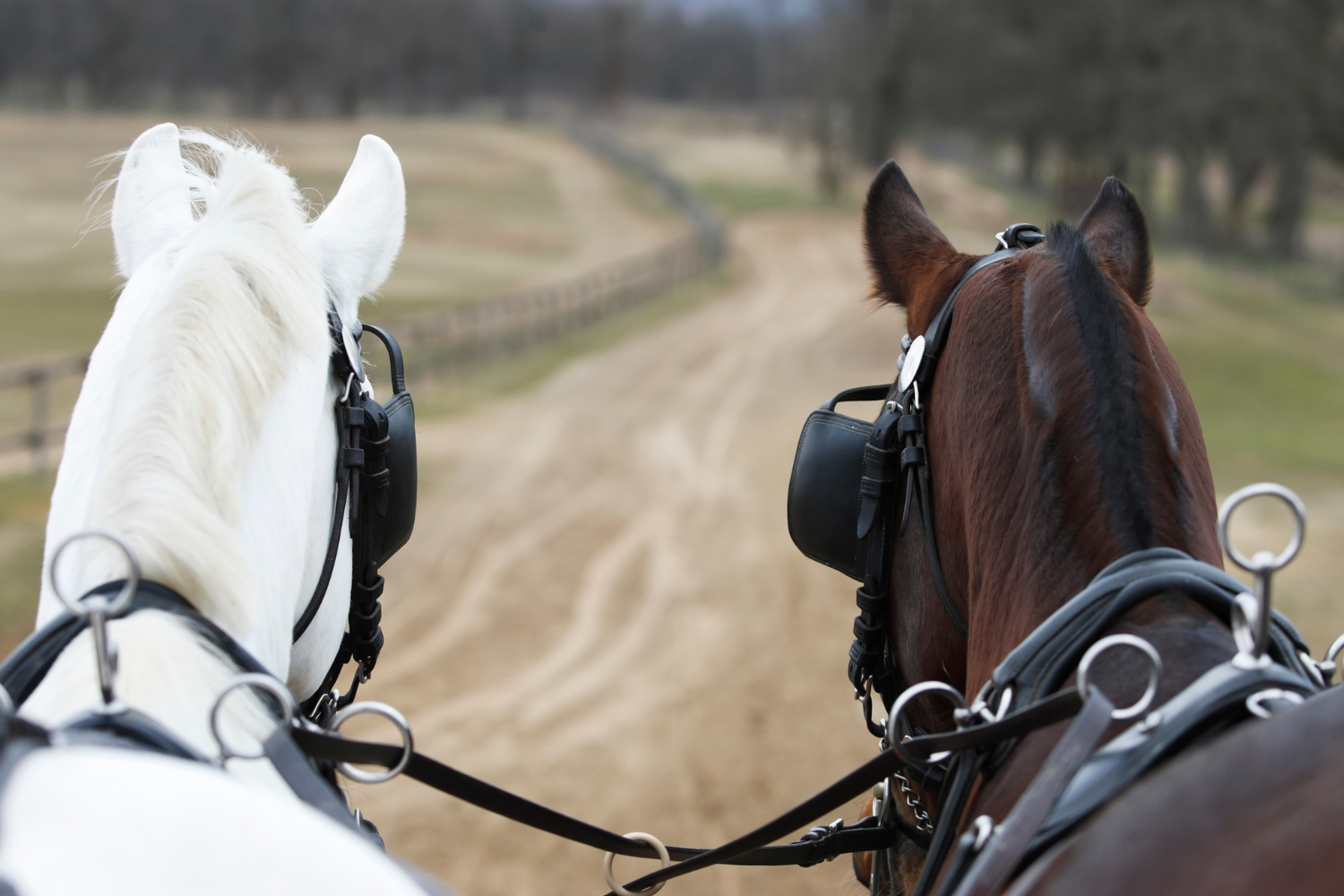
Advertisement
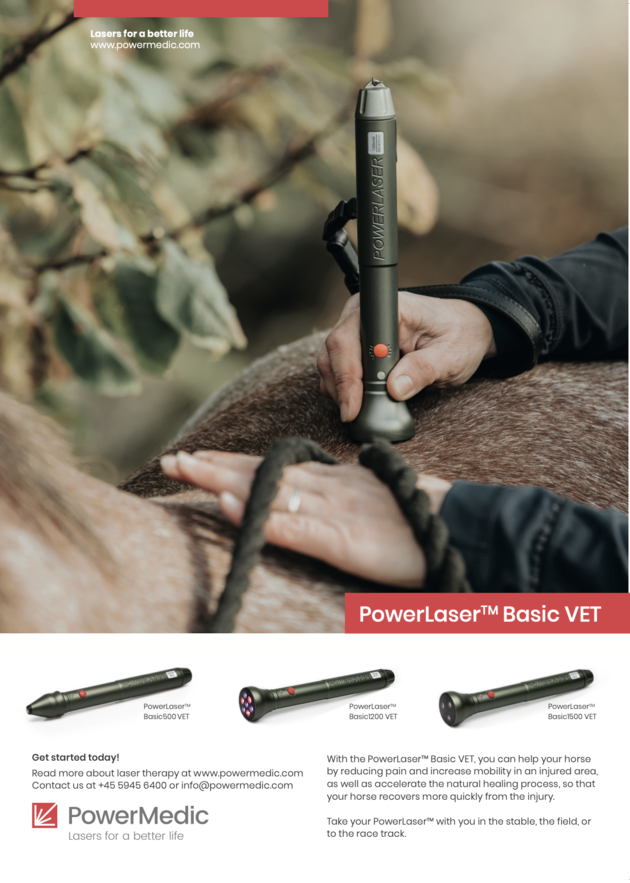
Photo: Canva Pro
Photo: Lone Marquard Jensen
Photo: FEI/Richard Juilliart
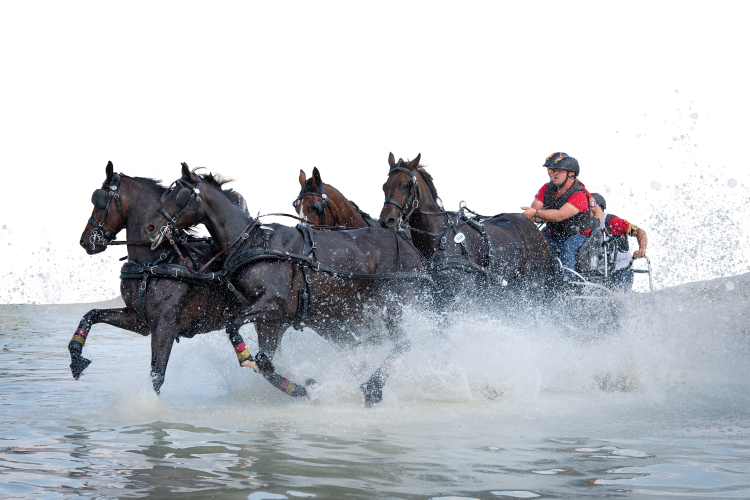
Competitive driving
Competitive driving with a horse combines the elegant dressage where the horse must be driven by a soft hand, with carrying and collection just as in dressage riding, and then combines it with speed and precision driving. The closest comparison to this kind of sport discipline in equestrian sport is probably eventing.
The dressage program is very much the same as when you ride a dressage test, but here the really hard part is getting the horse to be collected without using the aid from your own body, but doing it through voice control, and where the whip acts as your legs, by adding the light pressure when the horse's shoulder bulges out. All the exercises in the dressage programme are the same as in riding with different dressage exercises and collected gaits - well, everything is basically the same, except that the course is of a slightly bigger calibre. A driving course is 40 x 80 meters, and for 4-in-hand it is 40 x 100 meters.
Besides dressage, there is also marathon driving. This consists of two stages; the A and B stage. On the A stage, between 5 and 8 kilometers must be driven on time. Each team will have a stopwatch on the carriage. This means that in their daily training they have practiced trotting at a fairly constant speed, so that they can reach the set number of kilometers in the given time. After the A stage, the rider takes a break for 10 minutes to get his heart rate down and mentally ready for the B stage, which consists of 4 - 6 obstacles, which are also driven on time, as fast as possible. Each obstacle consists of gates from A to D, which are marked with a red letter A on the right, a white letter A on the left and so on. This is probably the discipline both horses and drivers have the most fun with. The horses pull with great eagerness and ears forward towards each obstacle that the driver runs towards and they obey every little command from the seat behind. This is also the discipline with the largest audience.
The cone competition
Last is the discipline cone driving which is precision driving. A lane is set up with about 20 gates, consisting of two cones on which a ball is placed. Here too, you see which way the gate has to be driven through, using a red cap on the right and a white one on the left. The track is about 250 meters long and has to be completed in a set time, so not only do you have to run the track correctly in numerical order, but you also have to be careful not to drop a ball and complete the whole track in the set time. You can compare it to a jumping track.
Friendly atmosphere
What has surprised me most about driving with horses has been the friendly, family spirit which is always present. Whether it's at the international showground, where people quickly come to the rescue with the loan of equipment or even a horse, if problems arise, and where national dishes are served at the big international shows. Or the warmth and help you always find in every association, at every small event - whether it's a talk about holidaying in Poland by horse-drawn carriage, or a club meeting - it has made my passion for the sport great and heartfelt.
Traditional driving
Probably the most beautiful equipage.
If one day you come across some beautiful, well-groomed old horse-drawn carriages in a nature area on your Sunday walk, there is most likely a competition going on in traditional driving. Here, it's the whole equipage that matters. At the start of the competition, the equipage presents itself to a judge, who evaluates them, the clothing of both driver and passengers, hats, gloves, but also whether the carriage and harness match in age and appearance, and whether everything is cleaned and polished. The horse must also appear clean and well groomed. Then the equipage goes out on a route, out in the beautiful nature, the route is set with a fixed length of the same number of kilometers for all teams, whether they have 1, 2, or 4 horses in front of the carriage. On the route there is a break where the riders stand still for a fixed number of minutes, often around 15 - 20 minutes. Back at the start there are several tasks, for example a glass of champagne on an object, for instance a pole, where the driver has to stop, take and drink, and then put the empty glass at the next object. Of course, it could also be a glass of water. Afterwards, an obstacle course is run on time. This is all laid down in the propositions you can read when registering for the competition. A very beautiful and entertaining competition to visit as a spectator too. The next and highly elite discipline is competition driving.
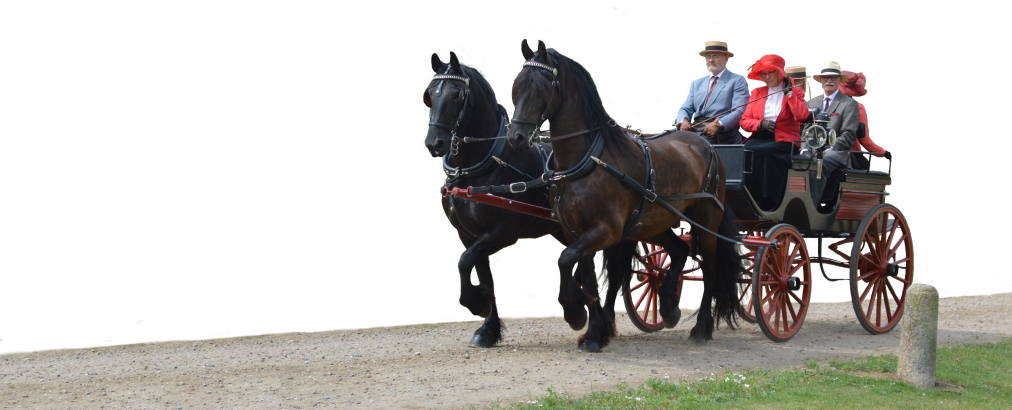
Photo: FEI/Richard Juilliart
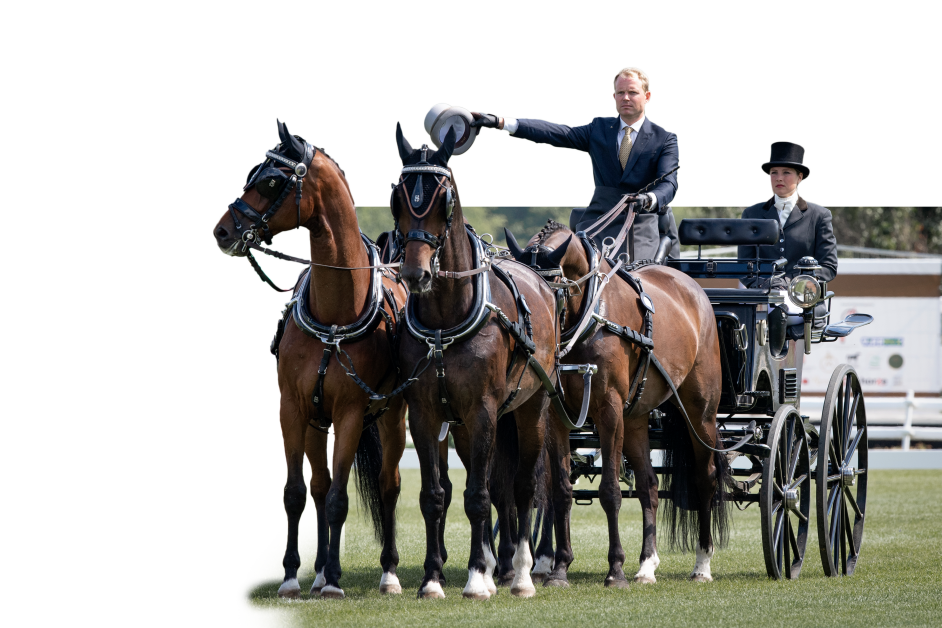
There are many prejudices, when the word driving is mentioned in a riding stable. But after all, there aren't many driving horses that aren't also riding horses. Some of the driving horses also compete at very high levels, for example in dressage.
In general, for the driving sport, the horses have a slightly different basic education and the whole attitude towards keeping horses is more of a family occupation, whether you are biologically related or just share the same passion. This is even shown in the fact that you don't drive alone, but always have a groom with you.
The groom is essential
Some might say that a groom is the most important person on the carriage. The groom is the counterweight if the cart tips a bit, the groom is the one who jumps down and stands in front of the horse at crossroads. The groom is the one who can move the cart in a marathon obstacle, where a wheel might hit a pole. The groom also stands in front of the horse when you get ready, or jump off the wagon if some equipment is not sitting right - because the driver is sitting on the buck, on the wagon, in his seat and has the lines in his hand. So basically, the groom is your safety.
The basic training of the driving horse
The most basic thing is that the horse should be able to stand still. Not only in the stable when you are grooming, but also when he is being harnessed or when you go on a picnic and have a basket full of sandwiches, cakes and coffee with you. Or when you're waiting at the showground. This is achieved with practice, calm and focus on your vocabulary - first without the cart on and then with.
Fortunately, most people choose a professional when first having to teach the horse about driving. The slightest uncertainty and unawareness from the new driver can have fatal consequences for both the treasured horse, but also other people on the road - both soft and those with a little more horsepower in the engine compartment. A frightened horse, harnessed and with a carriage behind it does not need much imagination to imagine what might happen.
That said, a lot of money is saved if you do a little preparation from home. Train the horse to wear the full harness. Drive it from the ground. That means that you lunge it with double lines. It requires practice, but gives a really good indication of what it means to have the lines in hand. And remember to teach the horse to stand still.
So, what kind of driver do you want to be?
Just as there are many disciplines of riding, there are also many disciplines of driving a horse and cart. The oldest, and probably the most traditional, is probably the working/ploughing/draft horse. There is no fixed breed associated with the draft horse, but often it is slightly heavier breeds such as the Fjord horse or the Belgian horse. The traditional meaning of the word is that it is used in agriculture. Yes, you read correctly. It is still used in agriculture. There are competitions in ploughing both in spring and autumn. On a daily basis, the driver trains with the pull of other things behind the horse, so it learns to walk in a straight line as well as learning the steady speed as the driver walks behind the horse. Timber pulling and precision between objects are practiced. When the driver drives his horse, it is often with, for example, a carriage from another bygone era, where the horse can back and park with one centimeter precision, as if it were a car to be maneuvered between two beams lying on the ground like a parking lot.
In Germany, every two years, there is a big international event called Pferdestark, where all the Nordic and other European countries come together to hold an event for this traditional discipline. Several hundred equestrians meet here and compete.
Some of these riders also ride another discipline, traditional driving.
By Nan Guldborg,
